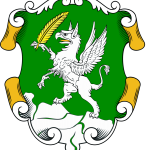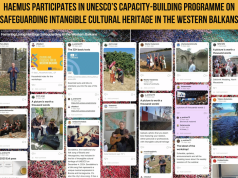
Grandma March Day! Japanese People Knitting Martinki in Tokyo
We take pride in the Macedonian Embassy in Japan. They reached out to us to provide material for a presentation as they were part of a major event in Tokyo promoting Martinki – UNESCO’s intangible cultural heritage, says Vasilka Dimitrovska, Director of the “Haemus” Center for Scientific Research and Promotion of Culture.
Japanese people knitted martinki with red and white wool threads at the gathering organized by the Macedonian Embassy in Japan at the International Art Center Tokyo (IAC) over the weekend. The tradition of knitting martinki and wearing them as adornments in the month when spring arrives. Cultural practices associated with March 1st have become part of the world’s cultural heritage after being inscribed on UNESCO’s Representative List of the Intangible Cultural Heritage of Humanity. As these customs are practiced in multiple countries, the subject was prepared by Macedonia, Bulgaria, Moldova, and Romania.

The promotion of this cultural heritage was organized by our embassy in collaboration with the embassies of the other three countries and the International Art Center – Tokyo. Attendees could follow the presentations of the diplomatic missions, participate in martinki -making workshops, explore promotional stands of the four countries, listen to traditional music, and enjoy organic tea and pastries from the mentioned countries, says Andrijana Cvetkovikj, our ambassador to Japan.

The custom known as “Baba Marta/Grandma March Day/Granny Martha Day” involves the exchange and wearing of bracelets and brooches made of red and white woolen threads. They are known as martinki in our country, martenitsa in Bulgaria, and martisor in Moldova. These cultural practices have been transmitted since ancient times, celebrating the arrival of spring. The main practice involves the preparation, exchange, and wearing of martinki , which is hung on a tree or placed on a stone upon sighting the first stork, swallow, or blossoming tree. In ancient times, wearing martinki was believed to provide symbolic protection against dangers like bad weather and to ensure a safe transition from winter to spring for individuals, groups, and communities.
The tradition of martenitsi in our country has been promoted for several years by the Haemus Center for Scientific Research and Promotion of Culture. This year, the “Happy Baba Marta 2018” event was held at the Ramstore Mall, featuring handmade martinki from Macedonia, Bulgaria, and Romania.

Vasilka Dimitrovska, director of “Haemus,” says that martinki are part of the cultural identity of the Macedonian people, but also part of the tradition of several other Balkan peoples, which is a common thread connecting this part of Europe. The Macedonian part of the multinational application to UNESCO, among other things, is based on the support provided in written form by the team of “Haemus.” I am proud of the Macedonian Embassy in Japan. They approached us to provide material for a presentation as they were part of a major event in Tokyo promoting martinki – UNESCO’s intangible cultural heritage. Congratulations on the successful promotion of our heritage and an embassy that can serve as an example. I couldn’t believe I would live to see Japanese people making martinki – Dimitrovska shared on the social network Facebook.
In Skopje, the “Grandma March Day Event in 2018” event will be open until Sunday. The setup is enriched with educational panels, a sales gallery with handicrafts, and creative workshops for children. Part of the activities of the event also includes the publishing house “Ars Lamina” with the production of editions for children titled “Martinki: Threads, Weavings, and Red-White Patterns,” as well as creative workshops through the educational center “Ars Lamina” and the Literatura.mk bookstores.
The article was originally published on the Fakulteti.mk website on March 1, 201.





